Omron HBF-516 User Manual
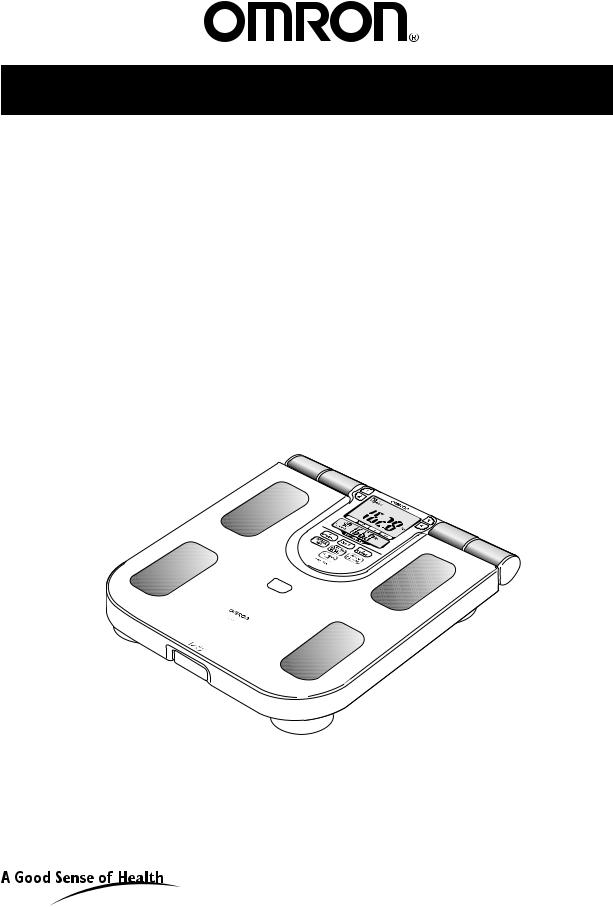
Instruction Manual
Full Body Sensor
Body Composition Monitor
and Scale
Model HBF-516

TABLE OF CONTENTS |
|
Before Using the Monitor |
|
Introduction...................................................................................................... |
3 |
Safety Information ........................................................................................... |
4 |
Information on Body Composition .................................................................. |
6 |
Principles of Full Body Sensing Calculations............................................ |
6 |
Body Mass Index........................................................................................ |
7 |
Body Fat ..................................................................................................... |
7 |
Visceral Fat................................................................................................. |
8 |
Resting Metabolism.................................................................................... |
9 |
Skeletal Muscle ........................................................................................ |
10 |
Body Age.................................................................................................. |
10 |
Long-term Planning for Successful Weight Loss ..................................... |
11 |
Recommended Measurement Times ........................................................ |
12 |
Operating Instructions |
|
Know Your Unit ............................................................................................. |
14 |
Battery Installation......................................................................................... |
17 |
Setting the Date and Time.............................................................................. |
19 |
Setting Personal Data ..................................................................................... |
21 |
Changing Personal Data ........................................................................... |
23 |
Deleting Personal Data ............................................................................. |
24 |
How to Take a Measurement.......................................................................... |
25 |
Understanding Your Measurement Results.................................................... |
30 |
How to Measure Weight Only........................................................................ |
31 |
How to Use the Memory Function................................................................. |
32 |
Care and Maintenance |
|
Error Indicators .............................................................................................. |
37 |
Troubleshooting Tips ..................................................................................... |
38 |
Care and Maintenance.................................................................................... |
39 |
FCC Statement ............................................................................................... |
40 |
Warranty......................................................................................................... |
41 |
Specifications ................................................................................................. |
42 |
2
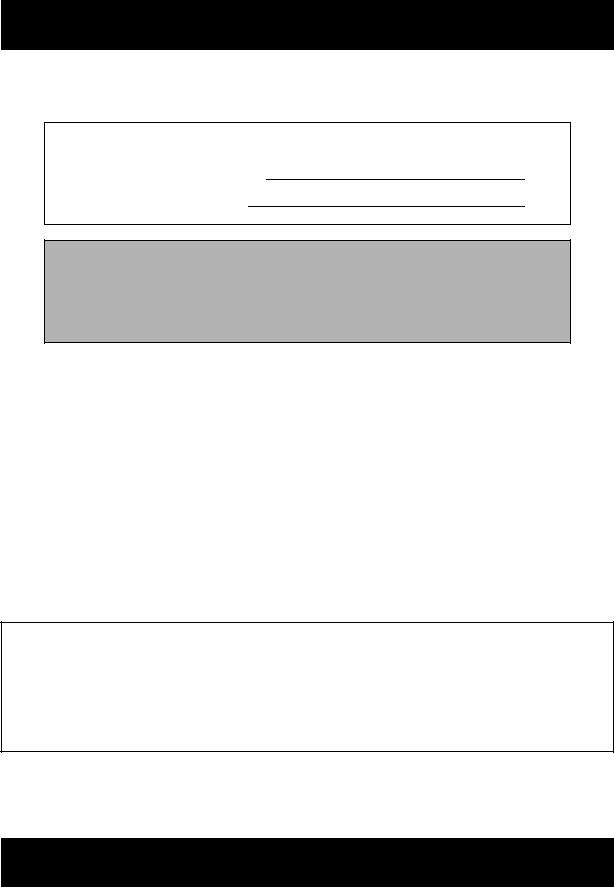
INTRODUCTION
Thank you for purchasing the OMRON® HBF-516 Full Body Sensor Body Composition Monitor and Scale.
Fill in for future reference.
DATE PURCHASED:
SERIAL NUMBER:
Staple your purchase receipt here
The Full Body Sensor Body Composition Monitor and Scale is easy to use. The monitor calculates the estimated values for body fat percentage, skeletal muscle percentage, resting metabolism and visceral fat level using the BI (Bioelectrical Impedance) Method. The monitor also calculates the BMI (Body Mass Index) and body age as well as weight. Push the power switch on, select your Personal Profile Number, and step onto the measurement platform. The personal memory function can be used to store data for up to four personal profiles. The memory function stores the measurement results for each personal profile from 1 day, 7 days, 30 days, 90 days and 180 days ago, along with high and low readings for each type of measurement result.
Your HBF-516 comes with the following components:
•Monitor/Scale
•Instruction Manual
•4 “AA” Batteries
•Measurement Log Sheet
 WARNING
WARNING
Do not use, or allow others to use, this monitor if fitted with a cardiac pacemaker or other implanted medical device.
 WARNING
WARNING
Pregnant women should not use this device.
 CAUTION
CAUTION
Read all of the information in the instruction manual and any other literature in the box before operating the unit.
SAVE THESE INSTRUCTIONS
3
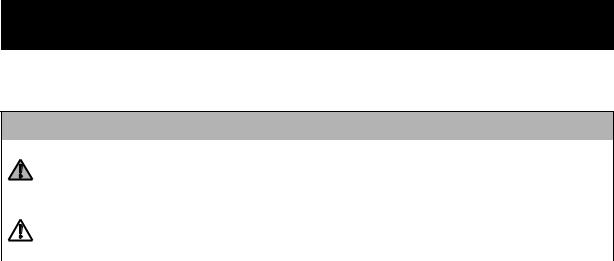
SAFETY INFORMATION
To assure the correct use of the product, basic safety measures should always be followed including the warnings and cautions listed in this instruction manual.
SAFETY SYMBOLS USED IN THIS INSTRUCTION MANUAL
Warning |
Indicates a potentially hazardous situation which, if not avoided, could result |
|
in death or serious injury. |
||
|
|
|
|
Indicates a potentially hazardous situation which, if not avoided, may result |
|
Caution |
in minor or moderate injury to the user or patient or damage to the equipment |
|
or other property. |
||
|
||
|
|
OPERATING THE DEVICE
 Do not use this monitor if you have a cardiac pacemaker or other implanted medical device. The Full Body Sensor Body Composition Monitor and Scale passes an extremely weak electrical current of 50kHz and less than 500µA through your body when taking a measurement to determine the amount of fat tissue. This weak current is not felt while using the monitor. Do not use, or allow others to use, this monitor if fitted with a cardiac pacemaker or other medical device.
Do not use this monitor if you have a cardiac pacemaker or other implanted medical device. The Full Body Sensor Body Composition Monitor and Scale passes an extremely weak electrical current of 50kHz and less than 500µA through your body when taking a measurement to determine the amount of fat tissue. This weak current is not felt while using the monitor. Do not use, or allow others to use, this monitor if fitted with a cardiac pacemaker or other medical device.
 Pregnant women should not use this device.
Pregnant women should not use this device.
 Contact your physician or healthcare provider before beginning a weight reduction or exercise program.
Contact your physician or healthcare provider before beginning a weight reduction or exercise program.
 Keep the monitor out of the reach of young children. The cord can become entangled and cause strangulation.
Keep the monitor out of the reach of young children. The cord can become entangled and cause strangulation.
 Persons with disabilities or persons who are physically frail should be assisted by another person when using this monitor or use a handrail, a walker, or other support device to prevent falling when stepping on and off the monitor.
Persons with disabilities or persons who are physically frail should be assisted by another person when using this monitor or use a handrail, a walker, or other support device to prevent falling when stepping on and off the monitor.
 Read all of the information in the instruction manual and any other literature in the box before operating the unit.
Read all of the information in the instruction manual and any other literature in the box before operating the unit.
 Do not use mobile telephones, microwave ovens or other devices that generate strong electrical or electromagnetic fields near the monitor. This may result in an operational failure.
Do not use mobile telephones, microwave ovens or other devices that generate strong electrical or electromagnetic fields near the monitor. This may result in an operational failure.
 Do not step on the edge or the display area of the measurement platform. The monitor may tilt. The display unit may be damaged.
Do not step on the edge or the display area of the measurement platform. The monitor may tilt. The display unit may be damaged.
 Do not step on the measurement platform when your body or feet are wet, for example after taking a bath or shower. You may slide and lose your balance.
Do not step on the measurement platform when your body or feet are wet, for example after taking a bath or shower. You may slide and lose your balance.
 Do not place the monitor on a cushioned floor surface such as a carpet or mat. A correct measurement may not be possible.
Do not place the monitor on a cushioned floor surface such as a carpet or mat. A correct measurement may not be possible.
 Do not use the unit on slippery surfaces such as tile floors or wet floors. The monitor may move. You may lose your balance and fall.
Do not use the unit on slippery surfaces such as tile floors or wet floors. The monitor may move. You may lose your balance and fall.
 Do not jump on the measurement platform. You may lose your balance and fall. The monitor may be damaged.
Do not jump on the measurement platform. You may lose your balance and fall. The monitor may be damaged.
 Stand on the measurement platform with bare feet. Attempting to stand on the measurement platform when wearing socks may cause you to slip and lose your balance.
Stand on the measurement platform with bare feet. Attempting to stand on the measurement platform when wearing socks may cause you to slip and lose your balance.
 Do not insert the batteries with their polarities incorrectly aligned.
Do not insert the batteries with their polarities incorrectly aligned.
4

SAFETY INFORMATION
OPERATING THE DEVICE (continued)
 Do not use new and worn batteries together.
Do not use new and worn batteries together.
 Do not use batteries of a different kind together.
Do not use batteries of a different kind together.
 Replace old batteries with new ones immediately. Replace all four batteries at the same time.
Replace old batteries with new ones immediately. Replace all four batteries at the same time.
 Remove the batteries if the unit will not be used for three months or more.
Remove the batteries if the unit will not be used for three months or more.
 Do not expose the batteries to flames or fire.
Do not expose the batteries to flames or fire.
 Should battery fluid leak and contact your eyes, skin or clothing immediately rinse with plenty of clean water. Immediately contact your physician in case of eye or skin contact.
Should battery fluid leak and contact your eyes, skin or clothing immediately rinse with plenty of clean water. Immediately contact your physician in case of eye or skin contact.
 Dispose of the device, batteries, components and optional accessories according to applicable local regulations. Unlawful disposal may cause environmental pollution.
Dispose of the device, batteries, components and optional accessories according to applicable local regulations. Unlawful disposal may cause environmental pollution.
 Operate the unit only as intended. Do not use for any other purpose.
Operate the unit only as intended. Do not use for any other purpose.
 This unit is intended for home use only. It is not intended for professional use in hospitals or other medical facilities. This unit does not support the standards required for professional use.
This unit is intended for home use only. It is not intended for professional use in hospitals or other medical facilities. This unit does not support the standards required for professional use.
 Remove the display unit from main unit before stepping on the unit. If you try to remove the display unit while stepping on to the unit, you may lose your balance and fall.
Remove the display unit from main unit before stepping on the unit. If you try to remove the display unit while stepping on to the unit, you may lose your balance and fall.
 Do not hold the handle inside the electrode grips when storing the display unit in the display unit holder. Your fingers could be trapped between the handle and the unit.
Do not hold the handle inside the electrode grips when storing the display unit in the display unit holder. Your fingers could be trapped between the handle and the unit.
CARE AND MAINTENANCE
 Do not disassemble or modify the unit. Changes or modifications not approved by Omron Healthcare will void the user warranty.
Do not disassemble or modify the unit. Changes or modifications not approved by Omron Healthcare will void the user warranty.
 Do not subject the monitor to strong shocks, such as dropping the unit on the floor.
Do not subject the monitor to strong shocks, such as dropping the unit on the floor.  Do not submerge the device or any of the components in water.
Do not submerge the device or any of the components in water.
5

 INFORMATION ON BODY COMPOSITION
INFORMATION ON BODY COMPOSITION
PRINCIPLES OF FULL BODY SENSING CALCULATIONS
What is Full Body Sensing?
Full Body Sensing provides a comprehensive understanding of your body composition to help you reach and/or maintain your fitness goals. Unlike other body composition monitors that rely on foot-to-foot measurements, Omron’s monitor measures the whole body (arm to foot) which provides a clinically-proven accurate profile.
How Omron calculates your body composition:
Omron’s algorithm focuses on the Bioelectrical Impedance Method as well as height, weight, age and gender.
Bioelectrical Impedance Method: The Omron Full Body Sensor Body Composition Monitor and Scale estimates the body fat percentage by the Bioelectrical Impedance Method. Muscles, blood, bones and body tissues with high water content conduct electricity easily. On the other hand, body fat does not store much water, therefore has little electric conductivity. The Omron Full Body Sensor Body Composition Monitor and Scale sends an extremely weak electrical current of 50 kHz and less than 500 µA through your body to determine the amount of water in each tissue. You will not notice or feel the electrical current.
The ratios of the water in your upper and lower body change throughout the day – as gravity pulls more water into your lower extremities. This means the electrical impedance of the body also varies – if more water is in your legs, other monitors such as foot-to-foot may show incorrect body fat readings. The Omron Full Body Sensor Body Composition Monitor and Scale takes measurements from both hands and feet – which reduces the influence water movement makes on your body composition results.
6

 INFORMATION ON BODY COMPOSITION
INFORMATION ON BODY COMPOSITION
BODY MASS INDEX
Body Mass Index (BMI) is a number calculated from a person’s weight and height. BMI is a reliable indicator of body fatness for people. BMI does not measure body fat directly, but research has shown that BMI correlates to direct measures of body fat. BMI is used as a screening tool to identify possible weight problems for adults.
BMI is calculated by using the following formula based on a ratio between your weight and height:
BMI = weight (lb) / height (inches) / height (inches) × 703
Interpreting the BMI Result
BMI |
BMI (Designation by the WHO) |
BMI Classification Bar |
BMI Rating |
|
|
||||
|
|
|
|
|
Less than 18.5 |
- (Underweight) |
|
7.0 |
- 10.7 |
|
10.8 - 14.5 |
|||
|
|
|
14.6 |
- 18.4 |
18.5 or more and less than 25 |
0 (Normal) |
|
18.5 |
- 20.5 |
|
20.6 - 22.7 |
|||
|
|
|
22.8 |
- 24.9 |
25 or more and less than 30 |
+ (Overweight) |
|
25.0 |
- 26.5 |
|
26.6 - 28.2 |
|||
|
|
|
28.3 |
- 29.9 |
30 or more |
++ (Obese) |
|
30.0 |
- 34.9 |
|
35.0 - 39.9 |
|||
|
|
|
40.0 |
- 90.0 |
Source: Values for obesity judgment proposed by WHO, the World Health Organization.
BODY FAT
Body fat serves a vital role in storing energy and protecting internal organs. We carry two types of fat in our bodies: 1) essential fat which is stored in small amounts to protect the body and 2) stored fat which is stocked for energy during physical activity. While too much body fat may be unhealthy, having too little fat can be just as unhealthy. Also, the distribution of body fat in men and women is different, so the basis for classifying the body fat percentage is different between the genders.
Interpreting the Body Fat Percentage Result
Gender |
Age |
Low (–) |
Normal (0) |
High (+) |
Very High (++) |
|
|
20-39 |
< 21.0 |
21.0 |
- 32.9 |
33.0 - 38.9 |
_ |
|
> 39.0 |
|||||
Female |
40-59 |
< 23.0 |
23.0 |
- 33.9 |
34.0 - 39.9 |
_ |
> 40.0 |
||||||
|
60-79 |
< 24.0 |
24.0 |
- 35.9 |
36.0 - 41.9 |
_ |
|
> 42.0 |
|||||
|
20-39 |
< 8.0 |
8.0 |
- 19.9 |
20.0 - 24.9 |
_ |
|
> 25.0 |
|||||
Male |
40-59 |
< 11.0 |
11.0 |
- 21.9 |
22.0 - 27.9 |
_ |
> 28.0 |
||||||
|
60-79 |
< 13.0 |
13.0 |
- 24.9 |
25.0 - 29.9 |
_ |
|
> 30.0 |
|||||
Source: NIH/WHO guidelines for BMI
Source: Gallagher et al., American Journal of Clinical Nutrition, Vol. 72, Sept. 2000
7
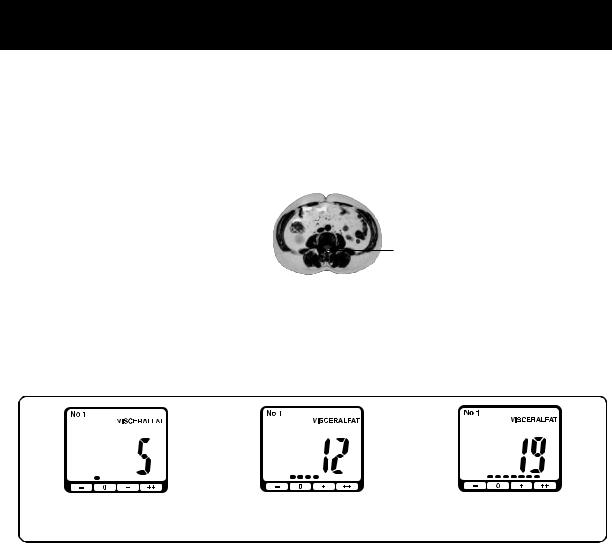
 INFORMATION ON BODY COMPOSITION
INFORMATION ON BODY COMPOSITION
VISCERAL FAT
Visceral fat is found in the abdomen and surrounding vital organs. It is different from fat found directly underneath the skin, which is referred to as subcutaneous fat. Visceral fat can go largely unnoticed because it’s not visible to the naked eye. One way visceral fat can be seen is through Magnetic Resonance Imaging (MRI).
MRI Cross Section at the Navel Level
Subcutaneous Fat 
Visceral Fat 
Spine
Too much visceral fat is thought to be closely linked to increased levels of fat in the bloodstream, which may lead to conditions such as high cholesterol, heart disease and type 2 diabetes. In order to prevent or improve these conditions, it is important to try to reduce the amount of visceral fat levels to an acceptable level.
Interpreting the Visceral Fat Level Result
Visceral Fat Level < 9 |
10 < Visceral Fat Level < 14 |
_ |
15 |
Visceral Fat Level > |
|||
0 (Normal) |
+ (High) |
++ (Very High) |
|
Visceral fat area (0 - approx. 300 cm2, 1 inch=2.54 cm) distribution with 30 levels.
Source: Omron Healthcare
NOTE: Visceral fat levels are relative and not absolute values.
8
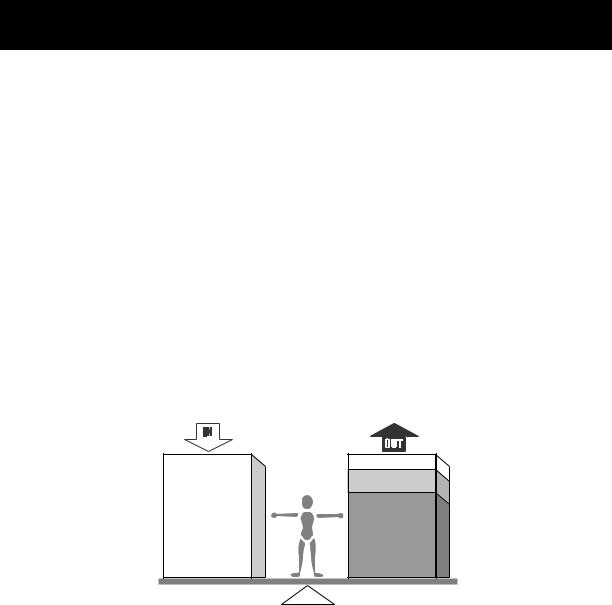
 INFORMATION ON BODY COMPOSITION
INFORMATION ON BODY COMPOSITION
RESTING METABOLISM
Regardless of your activity level, a minimum level of caloric intake is required to sustain the body’s everyday functions. Known as the resting metabolism, this indicates how many calories you need to ingest in order to provide enough energy for your body to function.
60-70% of daily energy use is for resting metabolism
The total amount of energy used by the body in a typical day is as follows:
Resting metabolism |
Energy required to maintain vital functions. |
|
Energy used for daily activities such as |
Daily activity metabolism |
commuting to work, household chores, |
|
hobbies etc. |
|
|
Diet-induced thermogenesis |
Energy emitted after eating a meal. |
The ratio of these is 60%-70% for resting metabolism, 20%-30% for daily activity, and 10% for diet induced thermogenesis. This means that resting metabolism accounts for most of our daily energy consumption.
If our daily caloric intake exceeds the amount of energy required for these activities, the additional calories can be stored as fat.
Calories
Calories
Diet-induced thermogenesis
Daily activity metabolism
Food
Resting metabolism
9

 INFORMATION ON BODY COMPOSITION
INFORMATION ON BODY COMPOSITION
SKELETAL MUSCLE
Skeletal muscle is the type of muscle that we can see and feel. When you work out to increase muscle mass, skeletal muscle is being exercised. Skeletal muscles attach to the skeleton and come in pairs -- one muscle to move the bone in one direction and another to move it back the other way. Increasing skeletal muscle will increase your body’s energy requirements. The more muscle you have, the more calories your body will burn. Building skeletal muscle can help prevent “rebound” weight gain. The maintenance and increase of skeletal muscle is closely linked to resting metabolism rate.
Interpreting the Skeletal Muscle Percentage Result
Gender |
Age |
Low (–) |
Normal (0) |
High (+) |
Very High (++) |
|
18-39 |
< 24.3 |
24.3 - 30.3 |
30.4 - 35.3 |
_ |
|
> 35.4 |
||||
Female |
40-59 |
< 24.1 |
24.1 - 30.1 |
30.2 - 35.1 |
_ |
> 35.2 |
|||||
|
60-80 |
< 23.9 |
23.9 - 29.9 |
30.0 - 34.9 |
_ |
|
> 35.0 |
||||
|
18-39 |
< 33.3 |
33.3 - 39.3 |
39.4 - 44.0 |
_ |
|
> 44.1 |
||||
Male |
40-59 |
< 33.1 |
33.1 - 39.1 |
39.2 - 43.8 |
_ |
> 43.9 |
|||||
|
60-80 |
< 32.9 |
32.9 - 38.9 |
39.0 - 43.6 |
_ |
|
> 43.7 |
Source: Omron Healthcare
BODY AGE
Body age is based on your resting metabolism. Body age is calculated by using your weight, body fat percentage and skeletal muscle percentage to produce a guide to whether your body age is above or below the average for your actual age.
10
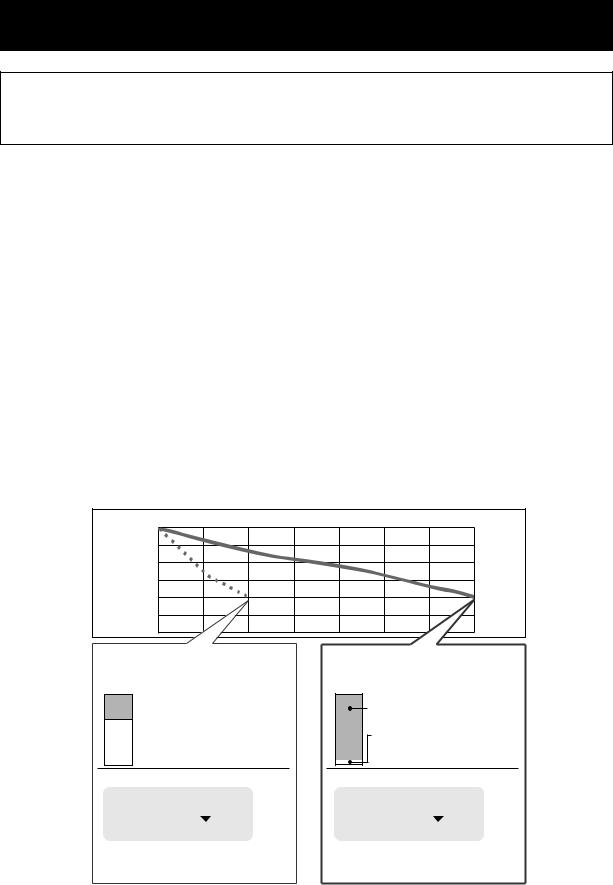
 INFORMATION ON BODY COMPOSITION
INFORMATION ON BODY COMPOSITION
 WARNING
WARNING
Contact your physician or healthcare provider before beginning a weight reduction or exercise program.
LONG-TERM PLANNING FOR SUCCESSFUL WEIGHT LOSS
There are lots of reasons for people to lose weight. To be healthier. To look better. To feel better. To have more energy.
No matter what the reason, successful weight loss and healthy weight management depend on sensible goals and expectations. If you set sensible goals for yourself, chances are you'll be more likely to meet them and have a better chance of keeping the weight off.
The foundation of a successful weight loss program remains a combination of a healthy diet and exercise customized for you. Simply reducing food intake to lose weight can lead to a decline in muscle mass and bone density. So even though your weight goes down, your resting metabolism is reduced making the body more prone to putting on fat. More skeletal muscle can prevent “rebound” weight gain.
The Omron Full Body Sensor Body Composition Monitor and Scale tracks your progress by monitoring weight, skeletal muscle, body fat, BMI and resting metabolism rate to help you reach your goals.
Here’s a comparison of losing weight quickly versus slowly:
Example comparing the same loss of 20 lb:
Weight |
1 |
2 |
3 |
4 |
5 |
6 |
7 |
Months |
(lb)
170
160
150
A starvation diet produces rapid weight loss of 20 lb,
but disrupts body mass...
 Fat reduction: 6 lb
Fat reduction: 6 lb
 Lean body mass reduction (muscle, bone, etc.): 14 lb
Lean body mass reduction (muscle, bone, etc.): 14 lb
Change in body fat percentage
|
Body fat percentage |
||
Before diet: |
36.0% |
||
|
|
|
|
After diet: |
36.9% |
||
A healthy diet
with weight loss of 20 lb...
Fat reduction: 18 lb
Lean body mass reduction (muscle, bone, etc.): 2 lb
Change in body fat percentage
|
Body fat percentage |
||
Before diet: |
36.0% |
||
|
|
|
|
After diet: |
28.3% |
||
Lean body mass (muscle, bone, etc.) greatly reduced, while the body fat percentage has not changed.
Body fat percentage reduced to a normal level.
11
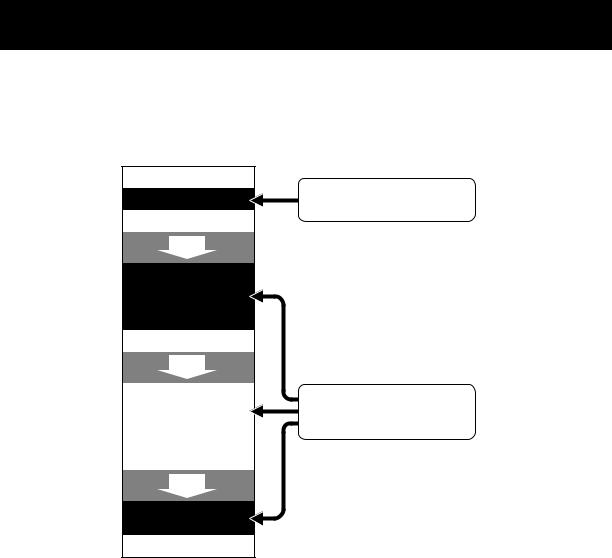
 INFORMATION ON BODY COMPOSITION
INFORMATION ON BODY COMPOSITION
RECOMMENDED MEASUREMENT TIMES
Being aware of the times when the body fat percentages shift within your daily schedule will assist you in obtaining an accurate trending of your body composition. It is recommended to use this unit in the same environment and daily circumstances. Reference the chart below:
Daily activities
Waking up
Recommended time |
After waking up |
Breakfast
2 hours
Recommended time
Lunch
2 hours
Recommended time |
About 2 hours or more after a meal |
|
|
Dinner
2 hours
Recommended time
Going to bed
Avoid Taking Measurements Under the Following Conditions:
-Immediately after vigorous exercise, after a bath or sauna.
-After drinking alcohol or a large amount of water, after a meal (about 2 hours).
If a measurement is taken under these physical conditions, the calculated body composition may differ significantly from the actual one because the water content in the body is changing.
12

 INFORMATION ON BODY COMPOSITION
INFORMATION ON BODY COMPOSITION
Results may differ from actual body fat percentage
There are certain conditions when significant differences may occur between the estimated and the actual body fat values. These differences may be related to changing ratios of body fluid and/or body composition.
The body fat percentage measured by this monitor may significantly differ from the actual body fat percentage for the following people:
•Elderly people
•People with a fever
•Body builders or highly trained athletes
•Persons undergoing dialysis
•Persons with osteoporosis who have very low bone density
•Persons with edema (swelling in the body)
•Children in growth stage
13
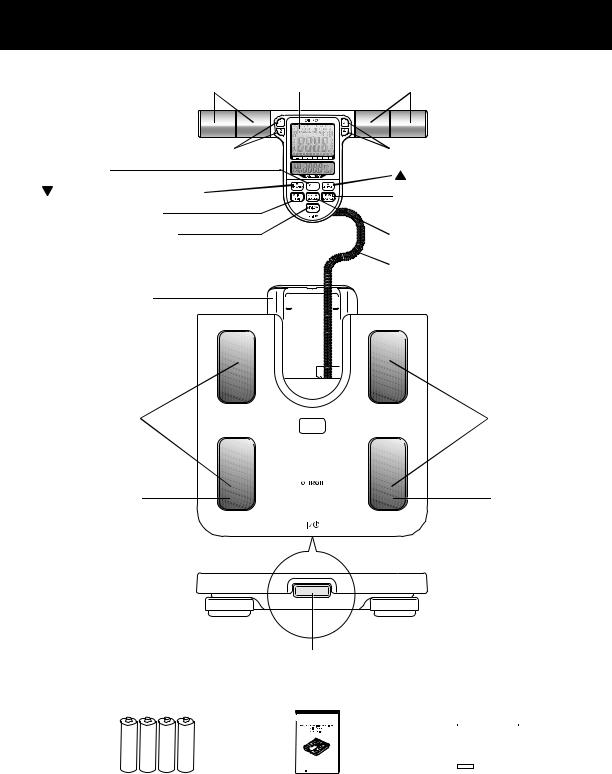
KNOW YOUR UNIT
Display Unit
Grip Electrodes Display |
Grip Electrodes |
Personal Profile Number Button |
Personal Profile Number Button |
SET Button |
UP/GUEST Button |
DOWN/MEMORY Button |
RM (Resting Metabolism) kcal/ |
WEIGHT/BMI Button |
BODY AGE Button |
VISCERAL FAT Button |
BODY FAT/MUSCLE Button |
|
|
|
Retractable Cord |
Display Unit Holder |
|
Main Unit (Measurement Platform)
Foot Electrodes |
Foot Electrodes |
Heel Electrode |
Heel Electrode |
Front View
Power Switch
Components
|
|
|
|
|
|
|
|
|
|
|
|
|
|
|
|
|
|
|
|
|
|
|
|
|
|
|
|
|
|
|
|
|
|
|
|
|
|
|
|
|
|
|
|
|
|
|
|
|
|
|
|
|
|
|
|
|
|
|
|
|
|
|
|
|
|
|
|
|
|
|
|
|
|
|
|
|
|
|
|
|
|
|
|
|
|
|
|
|
Instruction Manual |
|
|
|
|
|
|
|
||
Four AA Batteries |
Measurement Log Sheet |
|||||||||
14
